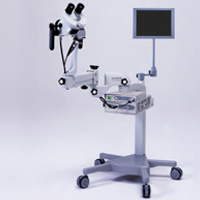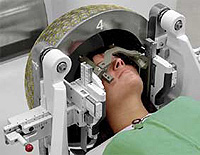What is myelic disease? What are the signs of this ailment? You will learn about this by reading this article.
Content
Myeloma disease (multiple myeloma) - the most common bone tumor in adults. The average age of its appearance is 65 years, frequency increases with age. The tumor is usually manifested by numerous foci in several skeleton bones.
The basis of the tumor is plasma cells, which normally participate in an immune response, synthesizing protective antibodies (immunoglobulins) in response to any antigens entering the body. With multiple myeloma, the number of plasma cells in the bone marrow becomes excessive. These cells synthesize a large amount of specific protein, which resembles normal antibodies. This protein is determined in the blood and urine, as well as postponed in the internal organs.
 An important difference in myeloma from leukemia is that tumor plasma cells do not go into peripheral blood. Therefore, the presence of a tumor is primarily judged by indirect signs - the detection of atypical tumor protein in the blood and urine, as well as the change in the drawing of bone tissue on the x-ray.
An important difference in myeloma from leukemia is that tumor plasma cells do not go into peripheral blood. Therefore, the presence of a tumor is primarily judged by indirect signs - the detection of atypical tumor protein in the blood and urine, as well as the change in the drawing of bone tissue on the x-ray.
With myeloma, X-ray research reveals multiple «Prochi» in the bones of the skull, ribs. Since the effect of the tumor is aimed at the destruction of normal bone tissue and washing the calcium and phosphorus from it, it leads to increased bone fragility.
Kidney damage is a key symptom of myeloma, - and it appears both in the deposition of amyloid and the appearance of kidney stones.
Another important clinical manifestation of myeloma will be repeated infections. This happens due to imperfect synthesis of immunoglobulins when the tumor of normal cells from the bone marrow is displaced.
Final confirmation of the diagnosis of the tumor gives the puncture of the bone marrow and its histological examination. This procedure allows you to see tumor cells. Typical for multiple myeloma is a picture «Eggs» In the bone marrow - an abundance of cells with a large dark core, reminiscent of the yolk of the fried egg.
Pharmacotherapy is used in the treatment of myeloma, combining 3-5 drugs, depending on the degree of tumor activity, the presence of anemia and significant bone lesions. In some cases, the bone marrow transplantation is used, as well as radiotherapy - for local treatment of bone pain syndromes.









